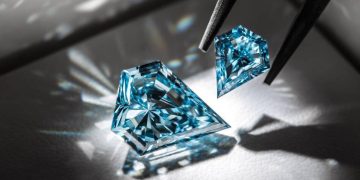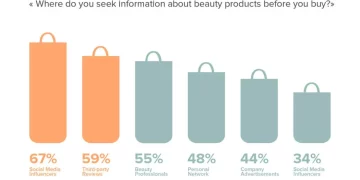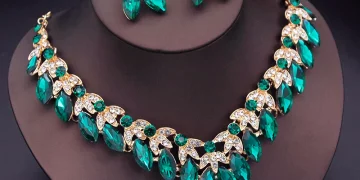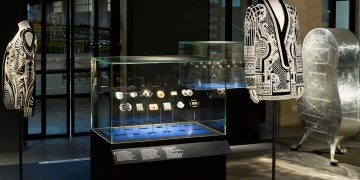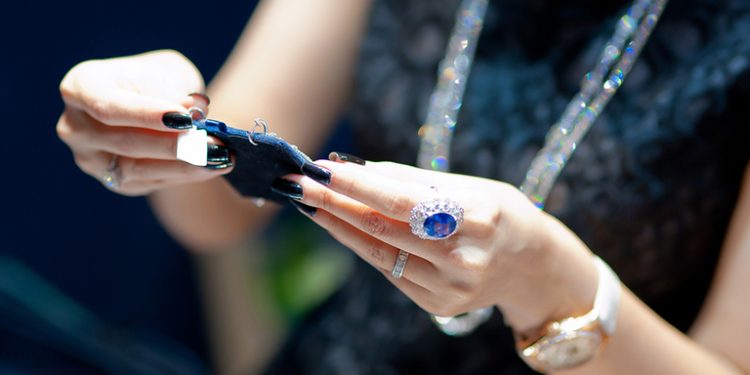Introduction: The Intersection of Technology and Jewelry
The jewelry industry has long been associated with tradition, craftsmanship, and timeless luxury. However, as the world rapidly embraces technological innovations, the jewelry sector finds itself on the cusp of a major transformation. From design to manufacturing, retailing, and customer interaction, technology is reshaping every facet of the industry. Innovations such as 3D printing, augmented reality (AR), artificial intelligence (AI), blockchain, and sustainable materials are revolutionizing how jewelry is created, sold, and experienced. As these technologies continue to evolve, the jewelry industry is poised to experience a wave of change that will challenge old paradigms and create new opportunities.
In this article, we will explore the various technological innovations that are shaping the future of the jewelry industry. We will look at how these advancements are transforming jewelry design, production methods, consumer engagement, and sustainability. Additionally, we will discuss the challenges that come with embracing these innovations and the potential risks that the industry must navigate in order to thrive in the digital age.
Section 1: Technology in Jewelry Design
3D Printing: Revolutionizing Customization and Production
One of the most significant technological advancements in jewelry design is the advent of 3D printing. Also known as additive manufacturing, 3D printing allows designers to create intricate jewelry pieces with incredible precision and minimal material waste. This technology has opened new doors for customization, enabling consumers to personalize their jewelry in ways that were previously impossible.
Before the rise of 3D printing, jewelry designers were limited by traditional methods such as casting and handcrafting. These processes, while allowing for skilled craftsmanship, could be time-consuming and expensive. With 3D printing, however, designers can create highly detailed models that can be printed in various materials, including precious metals and plastics. This not only allows for faster production but also opens up new possibilities for intricate, one-of-a-kind designs.
Moreover, 3D printing has given rise to the concept of “on-demand” manufacturing. Consumers can now collaborate directly with designers to create bespoke pieces that match their unique preferences. This has democratized the process of jewelry creation, as individuals can now have access to high-quality, custom-made jewelry without the exorbitant price tags traditionally associated with it.
AI-Powered Design: Enhancing Creativity and Efficiency
Artificial intelligence (AI) is another game-changing technology that is making its mark on the jewelry industry. AI-powered tools are increasingly being used to assist designers in creating jewelry that is both aesthetically pleasing and innovative. By analyzing vast amounts of data from consumer preferences, historical design trends, and materials properties, AI can generate design suggestions that are tailored to specific tastes and market trends.
For instance, AI software can analyze a customer’s past purchases and preferences to recommend jewelry designs that are likely to appeal to them. Furthermore, AI can optimize design elements such as proportions, symmetry, and style, offering suggestions that may not be immediately obvious to human designers. This level of support allows jewelry creators to streamline their design processes, reduce the risk of errors, and ultimately create more refined products.
Additionally, AI is being used to accelerate the prototyping process. Designers can now use AI tools to simulate the final product, adjusting parameters like color, size, and material, and quickly viewing realistic renderings. This helps reduce the time and cost associated with physical prototyping, allowing designers to test out multiple variations of a design before making a final decision.
Section 2: Advancements in Jewelry Manufacturing
Automation and Robotics: Improving Precision and Efficiency
Automation has already revolutionized many industries, and jewelry manufacturing is no exception. With the integration of robotics and automated systems, jewelry production has become faster, more efficient, and more precise. Tasks that once required significant manual labor—such as polishing, soldering, and stone setting—can now be completed by robotic arms with remarkable accuracy.
This increase in automation has not only reduced production time but also lowered costs. It has made high-quality, mass-produced jewelry more accessible to a broader range of consumers. Furthermore, automation reduces human error, ensuring that each piece of jewelry is made to the highest standards.
While automation in the jewelry industry has primarily focused on mass production, there is potential for even more sophisticated uses. For example, advanced robotics could be used to create intricate designs that would be nearly impossible for humans to replicate by hand. This level of precision could lead to entirely new forms of jewelry that blend art and technology in innovative ways.
Blockchain and the Future of Transparency
Blockchain technology, originally created for cryptocurrency transactions, is finding applications in the jewelry industry, particularly when it comes to transparency and traceability. The ability to track a piece of jewelry’s origin and journey from mine to market is becoming increasingly important to both consumers and brands.
For the luxury jewelry market, where authenticity and provenance are paramount, blockchain offers a way to securely record and verify the history of a piece of jewelry. By using blockchain, jewelers can offer customers a digital certificate of authenticity that provides detailed information about the origins of the materials used, the manufacturing process, and even the designers behind the piece.
Blockchain technology also has the potential to address ethical concerns in the jewelry industry, particularly when it comes to conflict diamonds. By tracking diamonds and other gemstones through every stage of their journey, blockchain can ensure that these materials are sourced responsibly and not linked to human rights violations or environmental degradation.

Section 3: Technology and Consumer Experience
Augmented Reality (AR): Changing the Way Consumers Shop
Augmented reality (AR) is revolutionizing the way consumers shop for jewelry. Through AR technology, consumers can virtually try on jewelry pieces without ever having to step foot in a store. This is especially valuable in the context of online shopping, where customers cannot physically touch or try on the products they are purchasing.
Many jewelry brands have already started integrating AR into their e-commerce platforms, allowing customers to upload photos of themselves or use their device’s camera to “try on” various pieces of jewelry. This immersive shopping experience helps consumers visualize how a piece of jewelry will look on them, making it easier for them to make purchase decisions.
Moreover, AR is enhancing the in-store experience as well. In physical retail environments, customers can use AR mirrors or apps to try on multiple pieces without the need for a jewelry consultant to assist them. This can lead to a more personalized and efficient shopping experience, which is especially important in the luxury market, where consumers expect a high level of service.
Virtual Showrooms and Digital Retailing
As technology continues to evolve, so too does the concept of luxury retail. Virtual showrooms and digital retail experiences are changing the way consumers engage with brands. Rather than visiting a physical store, consumers can now explore a brand’s offerings from the comfort of their own homes.
Virtual showrooms use a combination of 3D modeling, AR, and interactive design to replicate the experience of browsing in a physical store. Consumers can view jewelry from multiple angles, zoom in on intricate details, and even customize designs in real-time. This shift is particularly important for high-end jewelry brands, as it allows them to cater to a global market without the need for a physical presence in every major city.
The future of jewelry retail may also see the rise of virtual marketplaces where consumers can purchase, trade, or even “try on” digital jewelry in virtual environments, using avatars or digital personas.
Conclusion: Embracing Change in the Jewelry Industry
The jewelry industry stands on the brink of a technological revolution. From AI-driven designs to blockchain traceability, 3D printing, and augmented reality, technology is offering new possibilities for creating, marketing, and selling jewelry. However, as with any significant transformation, there are challenges to overcome, including the cost of implementing new technologies, the potential for job displacement, and the need for continued innovation.
In the coming years, the jewelry industry will likely see an increasing shift towards sustainability, personalization, and digital experiences. For those who are willing to embrace these changes, the future promises exciting new opportunities to engage with customers, create beautiful designs, and contribute to a more transparent and ethical industry.



